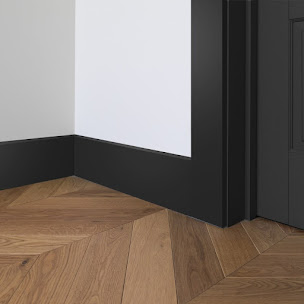Why Anti-Slip Grating is a Must-Have for Construction and Manufacturing Sites
Both safety and productivity are extremely important in construction and manufacturing environments. In relation to factories and construction sites, there is a relatively high presence of heavy machinery, a large volume of people, and some of the most challenging working conditions in the world. Something that is oftentimes overlooked but contributes to workplace safety significantly is anti-slip grating. Non-slip Grating, regardless of whether it is placed in walkways, catwalks, or stair treads, is crucial for accident prevention, injury downtime, and compliance with safety regulations.
How Anti-Slip Grating Contributes to Workplace Safety?
One of the most prevalent workplace accidents in many industries, particularly in the construction and manufacturing sectors, is slips, trips, and falls. Industrial spills, rain, and many other processes within factories contribute to surfaces being slick and oily. Anti-slip floor grating solves this problem with a rough surface, which has been shown to be much more effective in providing the grip and traction needed to mitigate accidents effectively.
Anti-slip grating features a frictional surface or incorporated grit that increases the roughness underneath, providing better grip. Such designs ensure that slippage is prevented in even the most precarious of conditions, like rain or exposure to oil and chemicals. Installing such grating on walkways, mezzanine floors, platforms, and steps can be a lifesaver! It is a proactive safety measure that can prevent costly injuries.
Increased Efficiency
Employees can now quickly and easily navigate work zones and traverse regions without the fear of falling with the use of Anti-Slip GRP Grating. In addition to safety, anti-slip grating improves operational efficiency. This freedom of movement allows for better workflow, increased productivity, and minimized interruptions.
The morale and overall motivation of an organization define productivity. Higher levels of safety and lower amounts of interruptions lead to higher staff engagement and lower absenteeism, improving company morale. Although these problems affect the workplace substantially, they also affect the profitability of the business.
Occupational Safety and Health Regulations
Protecting the well-being and health of employees are crucial components of any industrial and government standard. Anti-slip grating is required in construction and industrial workspaces to meet the basic safety standards—and this is a reasonable step in protecting employees from unnecessary health risks. Using anti-slip floor grating in areas where slipping hazards are present may be required for safety inspections or becoming a certified member. Neglecting proper anti-slip precautions might result in legal consequences, fines, or possible liabilities due to injuries, if any, that are sustained.
Diversity and Toughness in Challenging Conditions
The versatility of Anti Slip Grating in construction and manufacturing is of great importance because of its performance in extreme conditions. The right grating material can withstand substantial damage whether in congested pedestrian zones, outdoors in the rain, or exposed to wet and corrosive chemicals.
For instance, anti-slip GRP Grating consists of glass-reinforced plastic, which increases its resistance to corrosion, rust, and chemicals. It is easy to install and lightweight, making it perfect for places where metal would erode. While anti-slip metal grating is extremely strong and works in heavy load-bearing areas such as industrial platforms or loading docks.
Adding to its advantages, plastic grating is non-conductive and resistant to many chemicals while also providing excellent anti-slip properties. Its low maintenance requirements make it a practical choice for facilities looking to cut down on operational costs.
Long-Term Cost Benefits
The initial investment in slip-resistant grating systems seems high; however, the long-term return makes it worth it. Slip and fall accidents alone encompass a wide range of medical expenses and insurance claims that would be compensated. Furthermore, slip-resistant grates require less replacement and maintenance, which leads to significant savings.
Slip-resistant measures such as anti-slip tapes not only decrease accidents but also ensure seamless workflow, which greatly benefits the business. This is a huge advantage for businesses with tightly controlled schedules.
Environmental and Hygienic Considerations
Besides safety and hygiene, non-slip grating also helps in enhancing environmental sustainability. The design of certain anti-slip grates is open-grid, which helps liquids and debris to flow through and prevents the formation of puddles or buildup.
Other types of non-slip GRP anti-slip grating are also made of plastic, which is environmentally friendly. Their durability ensures that fewer harmful substances are emitted into the atmosphere and prevents the corrosion of metals from occurring.
A Practical Approach for Any Kind of Facility
From walking paths on the rooftops to maneuvering around heavy machinery and factory aisles, anti-slip Plastic Grating is suitable for an extensive range of uses. Its adaptability and dependability are key attributes in industrial design. Moreover, it can be added to pre-existing frameworks, enabling businesses to improve their safety systems without extensive structural modifications.




Comments
Post a Comment